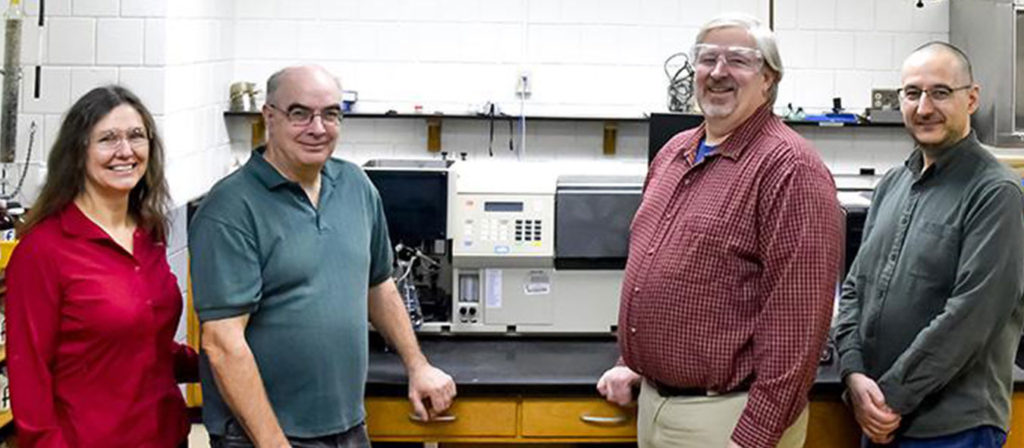A four-member team of faculty from Fairmont State University’s College of Science and Technology have been awarded a $20,000 grant from West Virginia Science & Research, a division of the West Virginia Higher Education Policy Commission. Team members include Dr. Mark Flood, Dr. Erica Harvey, Dr. Matt Scanlon and Dr. Andreas Baur. The grant will be used to acquire an atomic absorption (AA) spectrometer.
“The AA can be used to detect and quantify over 70 different elements, and exposes students to potential applications in fields as diverse as toxicology, pharmacy, materials science, geochemistry, and environmental science,” explained Baur.
“Our students will use the AA for quantifying synthesized inorganic compounds, testing for heavy metal contaminants in soils and plants, studying metal concentrations in water and air, in addition to analyzing gunshot residue and the forensic identification of metals,” said Flood.
This grant is part of a new “fast track to research” initiative for undergraduates at Fairmont State University. Through the creation of a Forensic and Analytical Chemistry Technology (FACT) Center, which describes both a vision and a facility, state-of-the-art analytical instrumentation will support student development of laboratory skills as well as collaborative, student-centered research projects on campus and with community and industry partners.
Student-faculty teams in the fast track laboratory sections will use the AA to monitor the health of Coal Run, a formerly polluted but recovering stream that runs from Fairmont State University to the Monongahela River. The stream creates a natural greenway being explored by the City of Fairmont, the WV Brownfields Assistance Center, and local non-profits as a way to create a pedestrian corridor to connect the university, community garden, and the downtown area. Below, a two-minute video describes the Coal Run Stream Rehabilitation project to date.
“Our goal is to have pre-college students (grades 7-12) participate in the Coal Run project through summer camps led by faculty and peer-mentored by fast track research students,” explained Scanlon. “Participants will be exposed to the scientific method, apply and develop sampling and processing techniques, and use advanced scientific equipment, including the AA, to work on an important local problem.”
“Our long-term goal is to recruit top STEM-interested students to Fairmont State, and to consciously strengthen their subsequent pathways into internships, summer research programs, graduate programs and STEM careers,” said Harvey. “In addition, we believe that the development of our instrumentation capabilities and the research fast track model for students will allow us to recruit highly motivated, energetic STEM faculty and will help sustain the program long term.”
(Story and photo courtesy of Fairmont State University).
